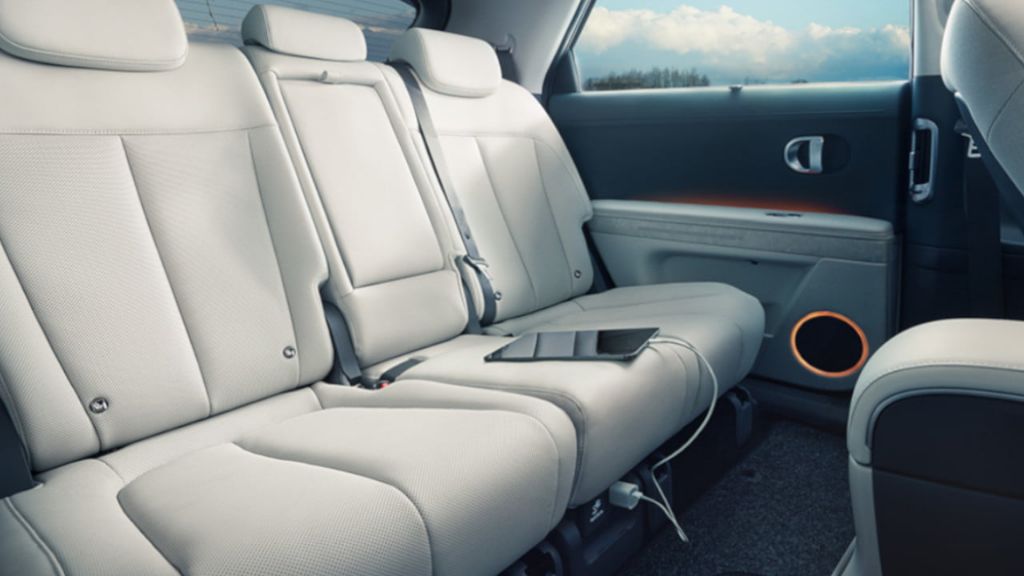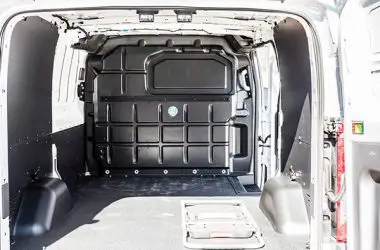Rear seat comfort is an important consideration for hatchback buyers, especially those with kids. While front seat riders often enjoy ample legroom, adjustability, and other creature comforts, backseat passengers are sometimes left cramped and uncomfortable. However, some automakers prioritize rear seat spaciousness and amenities in their hatchback models. Understanding the key elements of rear seat comfort can help shoppers select a hatchback that keeps all riders satisfied.
Legroom
Hatchbacks tend to have less rear legroom than sedans or SUVs, but they still offer decent space for passengers. The 2022 Honda Civic Hatchback has 37.4 inches of rear legroom, while the 2022 Toyota Corolla Hatchback has 29.9 inches. The 2023 Corolla Hatchback offers the same rear legroom at 29.9 inches. In comparison, midsize sedans like the Honda Accord have about 40 inches of rear legroom. Compact SUVs like the Honda CR-V have 39-41 inches of rear legroom.
While less than sedans and SUVs, the rear legroom in most hatchbacks is sufficient for average-sized adults on shorter trips. Taller passengers may find legroom tight, especially in smaller hatchbacks like the Corolla. Overall, hatchbacks sacrifice some rear passenger space for their versatile cargo areas.
Headroom
Headroom refers to the amount of space between the top of an occupant’s head and the vehicle’s ceiling. Many hatchbacks suffer from limited headroom due to their sloping rear rooflines (https://cars.usnews.com/cars-trucks/advice/roomiest-small-cars). This can make the rear seats feel cramped, especially for taller passengers. In the most spacious hatchbacks, rear seat headroom measures around 38 inches or more.
The 2023 Honda Civic hatchback has 36.0 inches of rear headroom, which is decent but less than some rivals (https://cars.usnews.com/cars-trucks/honda/civic/2023/interior). The latest Mazda 3 hatchback offers similar headroom at 36.1 inches. For optimal headroom, look for hatchbacks with more upright or squared-off rear ends like the Kia Soul or Toyota Corolla Hatchback.
Seat Materials
The material used for car seats can greatly impact comfort and durability. Leather seats are often considered the most luxurious, but can get hot in summer and cold in winter. Cloth or fabric seats are softer and more breathable, but may not be as durable or stain-resistant as leather. Synthetic leather and vinyl are cheaper alternatives that mimic the look of real leather while providing good durability.
According to Alborestoration, common seat materials include:
- Leather – Attractive and durable but requires regular cleaning and conditioning. Retains heat and cold.
- Vinyl – Hardwearing and easy to clean but can be slippery and trap heat.
- Faux Leather – Simulates look of real leather at lower cost but less breathable.
- Polyester – Lightweight and breathable fabric good for warmer climates.
- Alcantara – Soft suede-like microfiber durable and stain resistant.
For the best comfort in a hatchback, cloth or faux leather seats may be preferable to real leather, which can get overly hot in the summer. Synthetic blends like alcantara offer good durability and easier cleaning versus fabric. Overall seat design including padding and bolsters also impacts comfort.
Seat Cushioning
Seat cushioning is important in hatchbacks to provide comfort during long drives (Amazon, 2022). Thicker, high-density cushioning can absorb bumps and uneven terrain better. Many factory hatchback seats use 1-2 inches of basic foam or polyester stuffing (Suninbox, 2022). Aftermarket seat cushions can provide 3-5 inches of memory foam or gel for optimal comfort.
Supportive cushioning keeps the body properly aligned and takes pressure off the tailbone and back. Contoured cushions that are deeper in areas like the lower back provide better support than flat cushions. Lumbar support cushions or inflatable bladders are common in higher-trim hatchback models. For shorter drivers, a seat cushion with a front wedge can boost visibility and comfort.
Adjustable Seats
One of the key seat comfort features to look for in hatchback models are adjustable seats. Having seats that can slide, recline, and fold allow drivers to truly customize their seating position for maximum comfort. Many hatchbacks now offer sliding seats that can move forward and backward, letting drivers find the ideal distance from the steering wheel and foot pedals.[1]
Seat recline is another important adjustability feature. Being able to tilt the seatback changes the lumbar support and seating angle to prevent fatigue and soreness on long drives. Most hatchbacks have at least some recline functionality, with higher trims adding power controls.[2]
Finally, look for rear seats that fold down to create more cargo space when needed. Fold-flat rear seats are especially nice in hatchbacks to haul larger items. 60/40 split-folding rear seats provide the most flexibility.[1]
Overall, focusing on adjustable seats when shopping for a hatchback will pay dividends in terms of comfort over the life of ownership. Test drive different trims and look for powered controls and customizability.
[1] https://autoricambisanmauro.it/en/product/accessori-per-interni-en/tappeti-auto-universali-su-misura-e-vasche-baule-en/tappeti-auto-su-misura-pro-line-en/vasca-baule-dryzone-corsa-e-2014-2019bagagliaio-inferiore-con-ruota-di-scorta-senza-sedili-posteriori-regolabili-hatchback/
[2] https://autoricambisanmauro.it/en/product/accessori-per-interni-en/tappeti-auto-universali-su-misura-e-vasche-baule-en/tappeti-auto-su-misura-pro-line-en/vasca-baule-su-misura-pro-line-3d-opel-corsa-e-baule-inferiore-2014/
Seat Climate Control
Keeping rear passengers comfortable is important, especially on long drives. Many newer hatchbacks now offer rear seat climate control features to provide targeted heating, cooling, and ventilation just for the backseat.
Systems like GMC’s Rear Automatic Climate Control allow passengers to adjust the temperature specifically for the rear cabin area. The climate control has its own sensors to detect the temperature in the back and adjust heating or air conditioning accordingly. This keeps the rear at a comfortable temperature without affecting the driver’s settings up front.
Ventilated seats are becoming more common in hatchbacks as well. Air vents in the seat cushion and seatback blow air through fine perforations in the leather to help remove perspiration. This keeps passengers cooler and more comfortable on hot days. Ventilation is usually adjustable with multiple fan speeds.
Heated rear seats are also very popular, especially in colder climates. Quick-warming elements in the seat cushions and backs provide soothing warmth at the touch of a button. This allows passengers to warm up on winter days without having to blast so much heat that the driver becomes uncomfortable.
Amenities
Hatchbacks offer a variety of amenities to keep rear seat passengers comfortable and entertained on the go. Many now come equipped with USB charging ports to keep devices powered up, along with 12V power outlets for additional charging capacity (https://www.motortrend.com/features/12-hatchbacks-cargo-space/).
Rear seat cupholders are also important, with some hatchbacks like the Honda Jazz offering up to 5 cupholders for rear passengers (https://www.quora.com/Which-is-the-best-hatchback-for-rear-seat-comfort-and-features). Integrated storage spaces like map pockets, door bins, and rear armrests with storage give passengers places to stash small items.
To keep rear seat riders entertained, many hatchbacks offer amenities like rear seat entertainment screens that allow passengers to watch movies and TV shows on road trips. Models like the Volkswagen Golf even have available tablet docks to securely mount tablets or smartphones to the front seatbacks.
Safety
Safety for rear seat passengers is a top priority for many car buyers. Hatchbacks have made major improvements in backseat safety features in recent years.
All new vehicles are required to have the LATCH system – Lower Anchors and Tethers for Children. The LATCH anchors allow you to securely install car seats without using the seat belt. Look for easy-to-access lower anchors and top tether anchors in the rear seats (Consumer Reports).
Make sure the rear seats have 3-point seat belts for all seating positions. The shoulder and lap belts should lock securely. Some automakers also offer inflatable rear seat belts for added protection.
While front airbags are standard, more hatchbacks now offer optional side airbags that protect rear passengers in side impact crashes. Curtain airbags running the length of the cabin are especially important.
Look for hatchbacks that perform well in rear crash tests. Models like the Subaru Crosstrek earn top ratings for rear passenger safety from the Insurance Institute for Highway Safety (Consumer Reports).
Conclusion
In summary, rear seat comfort is an important consideration for many hatchback buyers. Features like legroom, headroom, cushioning, climate control, and adjustability allow passengers to ride in comfort over both short and long distances. While amenities like USB ports and cupholders add convenience, the safety of rear seats should not be overlooked either.
For families, ridesharing services, and anyone who spends time in the backseat, prioritizing rear seat comfort helps ensure a pleasant and enjoyable ride for all. Automakers recognize this demand and continue improving the rear seat experience. With plenty of hatchbacks offering an abundance of comfort, buyers should have no trouble finding a model that caters to their needs.





